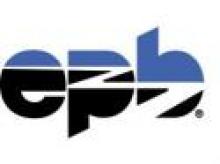This is a follow-up to my
coverage of Chattanooga's 1Gbps announcement and press around it.
Firstly, I have to admit I was simultaneously frustrated and amused by reactions to the $350/month price tag for the 1Gbps service, like Russell Nicols' "
Chattanooga, Tenn,. Gets Pricey 1 Gbps Broadband."
Wow.
I encourage everyone to call their ISP to ask what 1Gbps would cost. If you get a sales person who knows what 1Gbps is, you will probably get a hearty laugh. These services are rarely available in our communities… and when they are, the cost is measured by thousands to tens of thousands. Chattanooga's offering, though clearly out of the league most of us are willing to pay for residential connections, is quite a deal.
The reaction that it is pricey blows my mind… at $350 for 1Gbps, one is paying $.35 for each megabit. I pay Comcast something like $4.5 for each megabit down and $35 for each megabit up (I actually pay more as I rarely get the speeds advertised).
Make no mistake, Chattanooga's 1Gbps is very modestly priced. And I would not expect many communities to duplicate it. Chattanooga has some unique circumstances that allow it to create this deal; the fact that other community fiber networks around the country cannot match it should not be taken as a knock against them. Ultimately, communities must do what is best for them, not merely try to steal the thunder as the best network in the nation.
But for the folks who have the best network in the nation, I get the idea they have enjoyed the vast coverage of their creation. The Chattanooga Times Free Press ran a lengthy story titled "
Fastest on the web."
"We can never overestimate the amount of bandwidth that will be needed in the future," said jon Kinsey, a Chattanooga developer and former mayor who is working with local entrepreneurs to study ways to capitalize on the faster broadband service.




